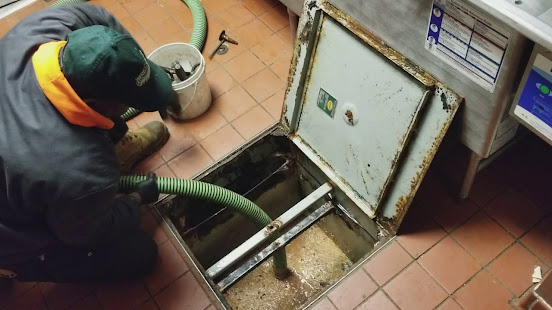How Often You Need to Clean Grease Trap?
Frequent grease trap cleaning and maintenance can
aid in keeping a restaurant kitchen safe as well as preserving local waterways.
From a safety point of view, it is vital to avoid safety issues such as fire
hazards. It is a vital part of restaurant management; as a restaurant owner,
you may take certain steps to keep FOG in check. For the uninitiated, the term
FOG refers to all the fat, oil, and grease that emerge from animal or plant sources
at the time of cooking. Before getting into the significance of hiring a grease trap cleaning company,
we will discuss what grease traps are and the nitty-gritty of the process.
What Does The Word Grease Trap
Mean?
It is a restaurant plumbing component
designed to keep the fat, oil, and grease from entering the wastewater collection
system. Grease traps or grease interceptors are available mainly in two types. An
interior trap is typically situated around the dishwasher or the sink in a
restaurant kitchen, and it often holds smaller quantities of FOG. An exterior
trap is situated outside the building or underground, is often bigger, and can
hold a larger volume of FOG. Now, we will talk about the routineness and
frequency of the grease trap cleaning process, and more information.
Reasons To Clean It Routinely
We have already touched upon the
significance of the process in the introduction. Nevertheless, we will
elaborate on it so that your restaurant can understand the potential benefits
of grease trap cleaning
from a business point of view.
Possible Benefits of Routine
Grease Interceptor Cleaning
Grease from residences,
industrial sources, and restaurants account for a good portion of blockages. When
water from the sink goes through the interceptor, FOG starts accumulating,
which makes it trickier for it to drain. The above-mentioned phenomenon results
in the trap being filled up. With routine or regular grease trap cleaning services, your
restaurant business can keep the interceptor from overflowing, thus avoiding
expensive plumbing costs. Frequently cleaning the area can reduce odors, too.
Remember, odors can be unpleasant to your restaurant customers, so reducing these
can contribute somewhat to sales. Experienced grease trap service technicians are capable of
preventing issues about the interceptor before these even emerge.
Cleaning Frequency
It could vary according to how
big or small the grease interceptor in your restaurant kitchen is as well as
how much grease it uses. Usually, it is good to clean restaurant grease traps
often enough for ensuring under 25% of FOG accumulation. Usually, confirming it
requires cleaning once a quarter at the least, or as often as once per month in
some cases. A local grease trap cleaning company can aid you in determining the frequency through
an inspection of your interceptor. Thus, it can establish a schedule of grease
interceptor maintenance for your restaurant business.
Seek Regular Service For Your
Business, Customers and The Environment
Preventing environmental effects,
lengthy cleaning procedures and added business costs can end up fostering a
productive and safe environment for your workers and customers. Establishing a
regular grease trap
cleaning service schedule through a professional is among the best ways
of avoiding issues regarding the interceptor.


Comments
Post a Comment